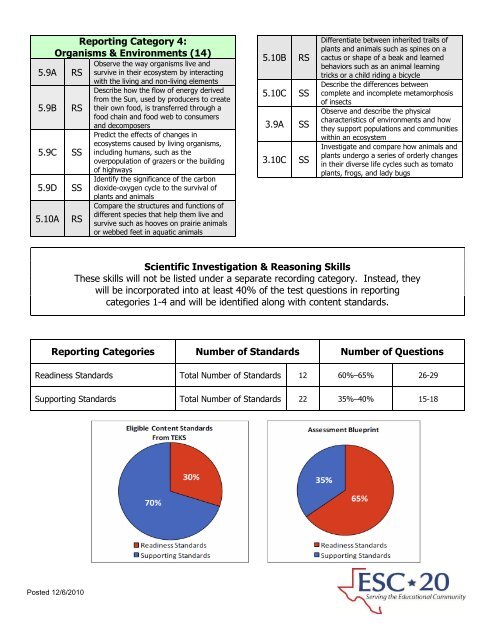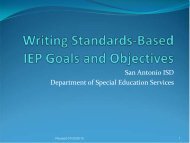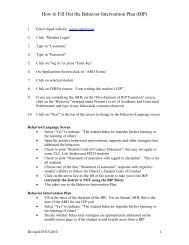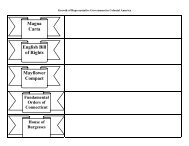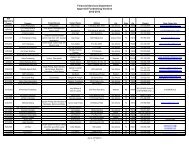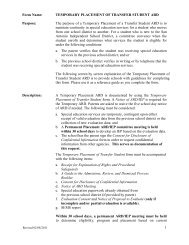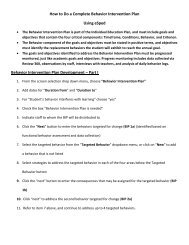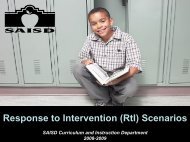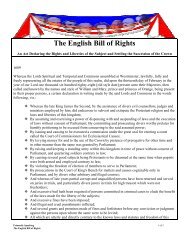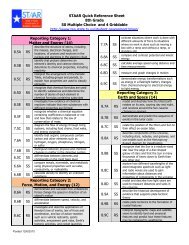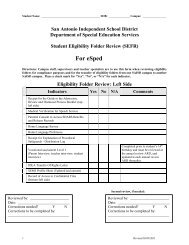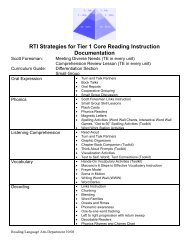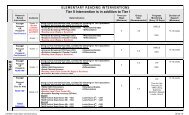5th grade STAAR Science
5th grade STAAR Science
5th grade STAAR Science
Create successful ePaper yourself
Turn your PDF publications into a flip-book with our unique Google optimized e-Paper software.
Reporting Category 4:<br />
Organisms & Environments (14)<br />
5.9A RS<br />
5.9B RS<br />
5.9C SS<br />
5.9D SS<br />
5.10A RS<br />
Observe the way organisms live and<br />
survive in their ecosystem by interacting<br />
with the living and non-living elements<br />
Describe how the flow of energy derived<br />
from the Sun, used by producers to create<br />
their own food, is transferred through a<br />
food chain and food web to consumers<br />
and decomposers<br />
Predict the effects of changes in<br />
ecosystems caused by living organisms,<br />
including humans, such as the<br />
overpopulation of grazers or the building<br />
of highways<br />
Identify the significance of the carbon<br />
dioxide-oxygen cycle to the survival of<br />
plants and animals<br />
Compare the structures and functions of<br />
different species that help them live and<br />
survive such as hooves on prairie animals<br />
or webbed feet in aquatic animals<br />
5.10B RS<br />
5.10C SS<br />
3.9A SS<br />
3.10C SS<br />
Differentiate between inherited traits of<br />
plants and animals such as spines on a<br />
cactus or shape of a beak and learned<br />
behaviors such as an animal learning<br />
tricks or a child riding a bicycle<br />
Describe the differences between<br />
complete and incomplete metamorphosis<br />
of insects<br />
Observe and describe the physical<br />
characteristics of environments and how<br />
they support populations and communities<br />
within an ecosystem<br />
Investigate and compare how animals and<br />
plants undergo a series of orderly changes<br />
in their diverse life cycles such as tomato<br />
plants, frogs, and lady bugs<br />
Scientific Investigation & Reasoning Skills<br />
These skills will not be listed under a separate recording category. Instead, they<br />
will be incorporated into at least 40% of the test questions in reporting<br />
categories 1-4 and will be identified along with content standards.<br />
Reporting Categories Number of Standards Number of Questions<br />
Readiness Standards Total Number of Standards 12 60%–65% 26-29<br />
Supporting Standards Total Number of Standards 22 35%–40% 15-18


